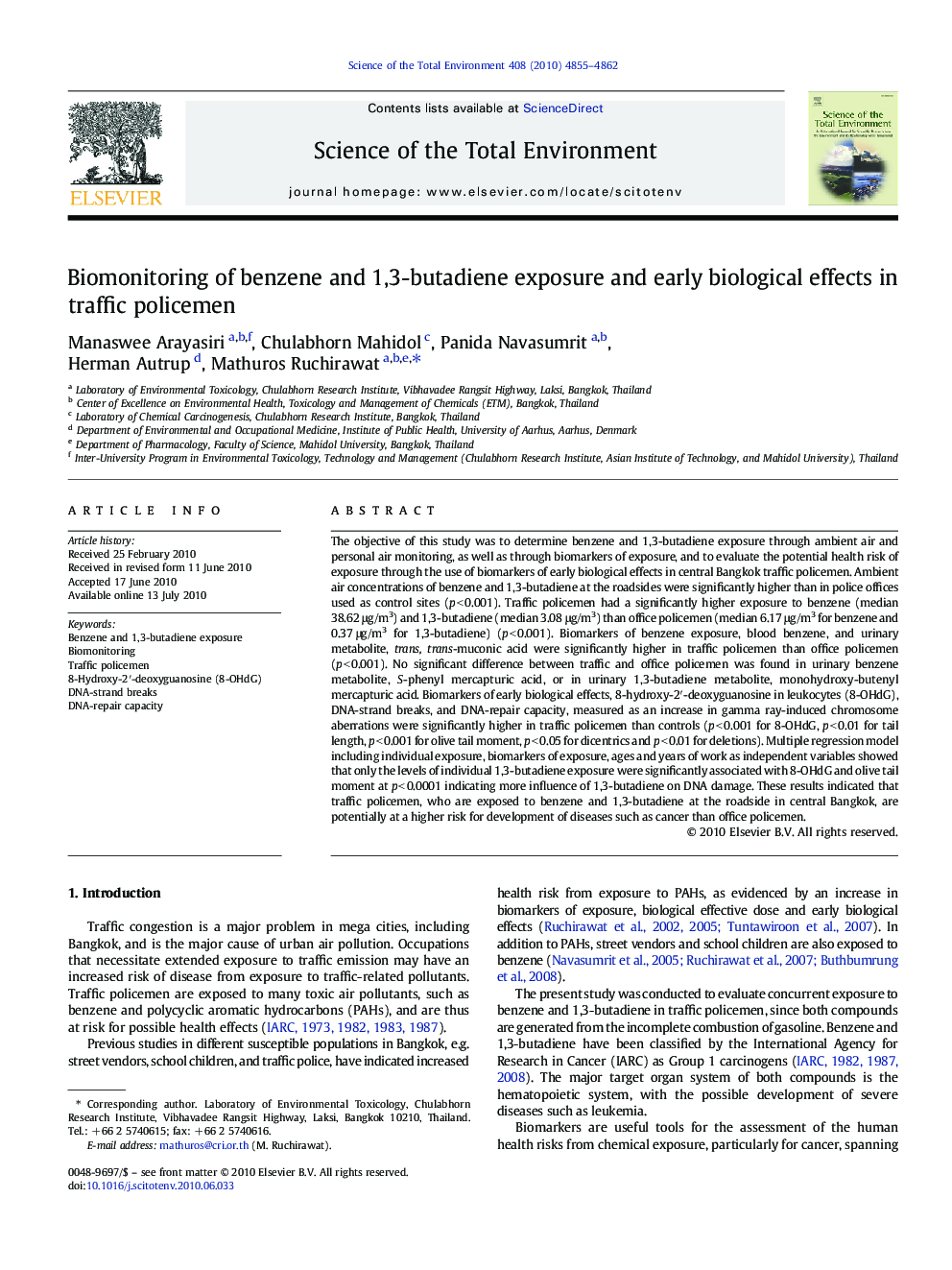| Article ID | Journal | Published Year | Pages | File Type |
|---|---|---|---|---|
| 4430944 | Science of The Total Environment | 2010 | 8 Pages |
The objective of this study was to determine benzene and 1,3-butadiene exposure through ambient air and personal air monitoring, as well as through biomarkers of exposure, and to evaluate the potential health risk of exposure through the use of biomarkers of early biological effects in central Bangkok traffic policemen. Ambient air concentrations of benzene and 1,3-butadiene at the roadsides were significantly higher than in police offices used as control sites (p < 0.001). Traffic policemen had a significantly higher exposure to benzene (median 38.62 μg/m3) and 1,3-butadiene (median 3.08 μg/m3) than office policemen (median 6.17 μg/m3 for benzene and 0.37 μg/m3 for 1,3-butadiene) (p < 0.001). Biomarkers of benzene exposure, blood benzene, and urinary metabolite, trans, trans-muconic acid were significantly higher in traffic policemen than office policemen (p < 0.001). No significant difference between traffic and office policemen was found in urinary benzene metabolite, S-phenyl mercapturic acid, or in urinary 1,3-butadiene metabolite, monohydroxy-butenyl mercapturic acid. Biomarkers of early biological effects, 8-hydroxy-2′-deoxyguanosine in leukocytes (8-OHdG), DNA-strand breaks, and DNA-repair capacity, measured as an increase in gamma ray-induced chromosome aberrations were significantly higher in traffic policemen than controls (p < 0.001 for 8-OHdG, p < 0.01 for tail length, p < 0.001 for olive tail moment, p < 0.05 for dicentrics and p < 0.01 for deletions). Multiple regression model including individual exposure, biomarkers of exposure, ages and years of work as independent variables showed that only the levels of individual 1,3-butadiene exposure were significantly associated with 8-OHdG and olive tail moment at p < 0.0001 indicating more influence of 1,3-butadiene on DNA damage. These results indicated that traffic policemen, who are exposed to benzene and 1,3-butadiene at the roadside in central Bangkok, are potentially at a higher risk for development of diseases such as cancer than office policemen.
